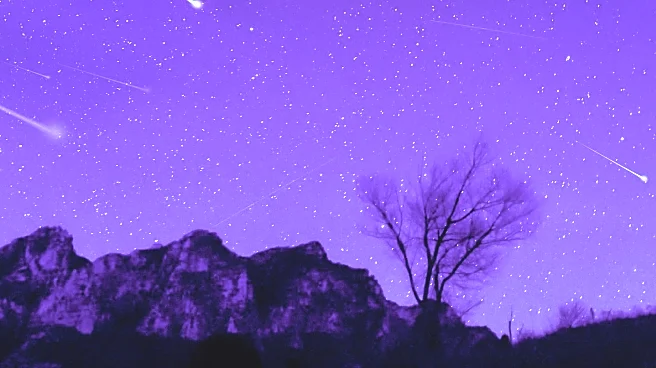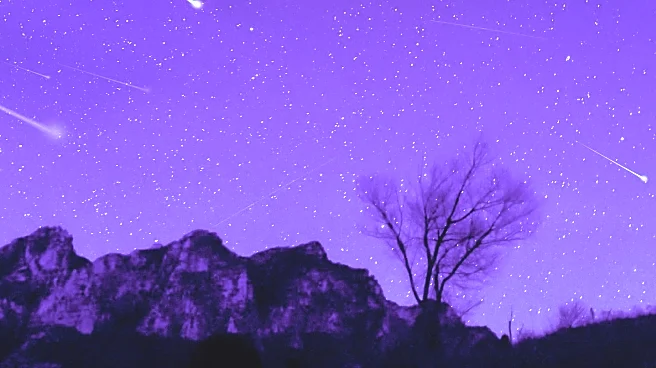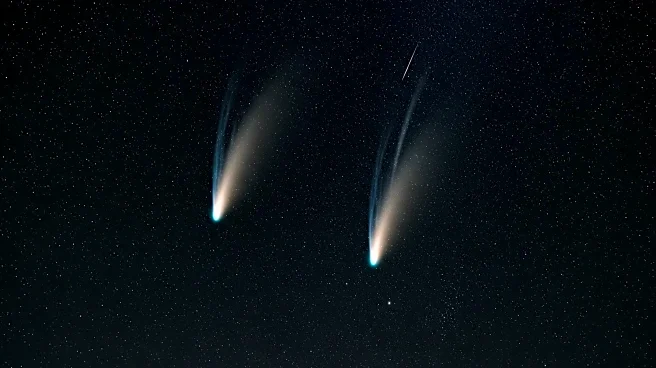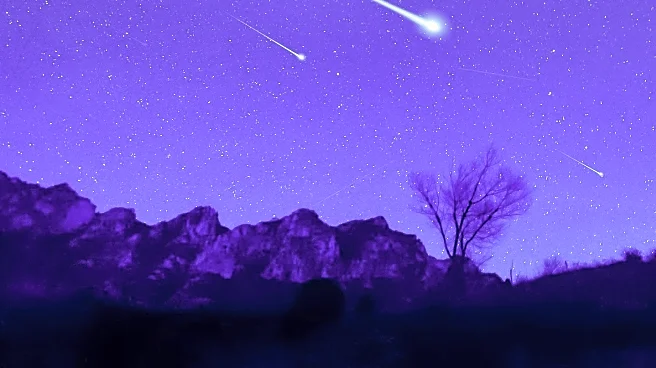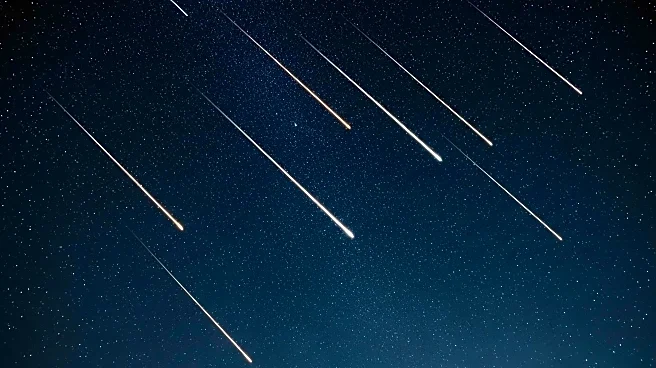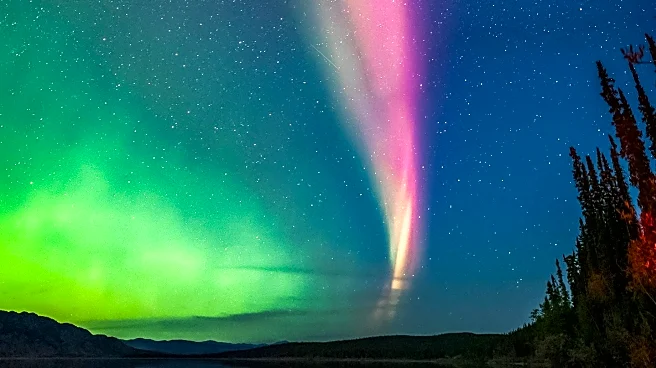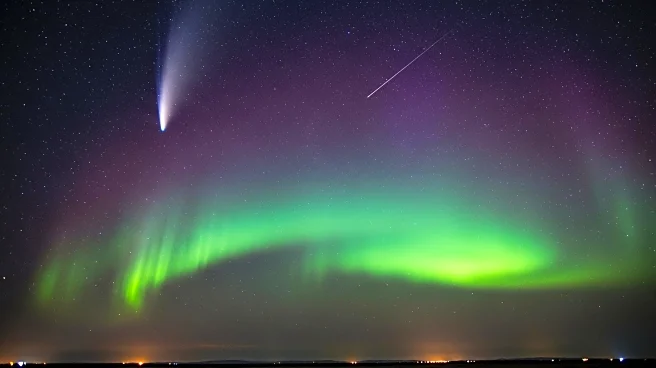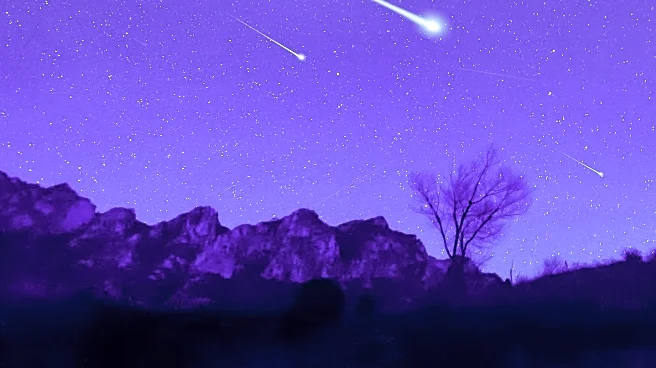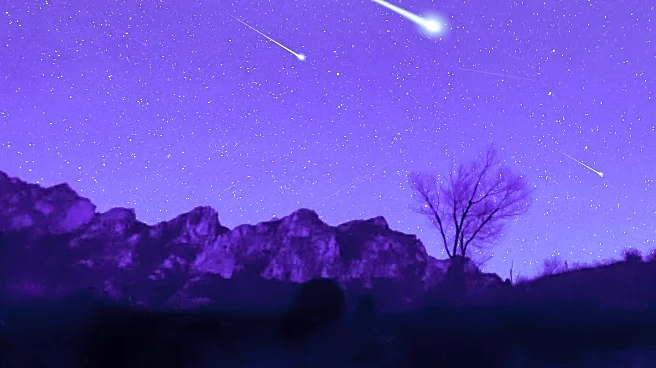What's Happening?
Skywatchers are in for a treat on October 5-6, 2025, with a series of celestial events. A supermoon, appearing 14% larger and 30% brighter than usual, will illuminate the night sky. The Draconid meteor shower, peaking on October 8, will offer up to 10 meteors per hour, though the supermoon's brightness may obscure some. Additionally, the Northern Lights may still be visible at high latitudes following recent geomagnetic storms. Saturn will also be visible near the moon, providing a striking conjunction.
Why It's Important?
These celestial events offer a unique opportunity for public engagement with astronomy, fostering interest in science and the natural world. The supermoon and meteor showers are accessible phenomena that can be enjoyed without specialized equipment, making them ideal for educational outreach. The visibility of the Northern Lights and planetary conjunctions further enriches the experience, encouraging people to explore the night sky and learn about the dynamics of our solar system.
What's Next?
As the month progresses, skywatchers can look forward to the Orionid meteor shower, which will peak later in October under darker skies. Comet Lemmon and Comet SWAN are also expected to brighten, potentially becoming visible to the naked eye. These events will continue to provide opportunities for observation and study, with astronomers closely monitoring the comets' trajectories and brightness.

